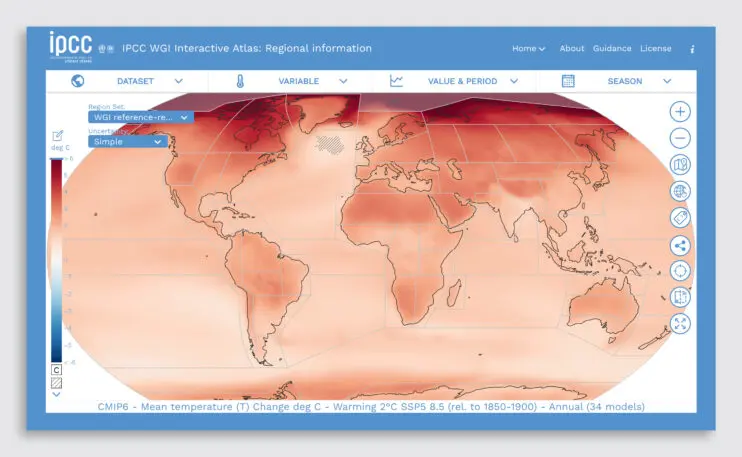Climate change is affecting the entire planet, but local impacts—floods, droughts, hurricanes, extreme heat, disease, or a combination of all of the above—differ from place to place. A new digital atlas from the U.N.’s Intergovernmental Panel on Climate Change lets you see what’s most likely to happen where you live.
The tool is part of a bleak new report prepared by hundreds of scientists that says that humans are “unequivocally” warming the planet, and that warming is already leading to severe impacts. “It’s indisputable that human activities are causing climate change,” Ko Barrett, vice chair of the Intergovernmental Panel on Climate Change, said in a press conference on Sunday. “Human influence is making extreme climate events, including heat waves, heavy rainfall, and droughts more frequent and severe. What’s new in this report is that we can now attribute many more changes at the global and regional level to human influence, and better project future changes from different amounts of emissions.”

As global leaders meet in November at the next United Nations climate summit, the interactive tool is designed to let governments see exactly how climate change is impacting their own countries. It’s not too late to avoid the most catastrophic impacts, the report says. “I think a key message here is that it is still possible to forestall many of the most dire impacts,” Barrett said. “But it really requires unprecedented transformational change, and rapid and immediate reduction of greenhouse gas emissions to net zero by 2050.”
Recognize your brand’s excellence by applying to this year’s Brands That Matter Awards before the early-rate deadline, May 3.
